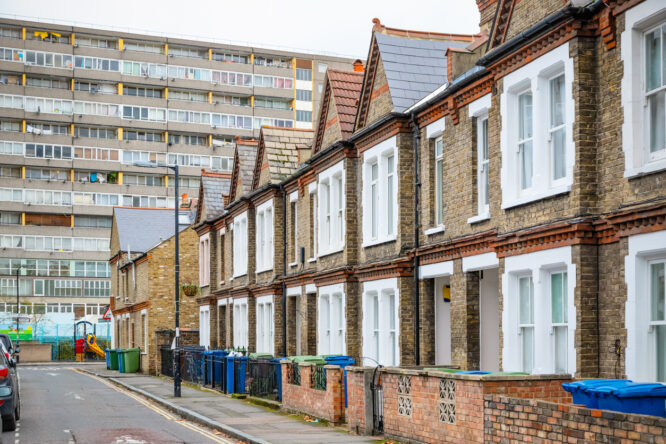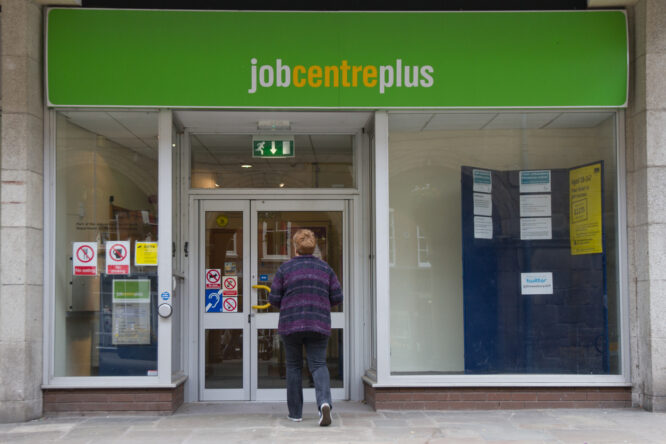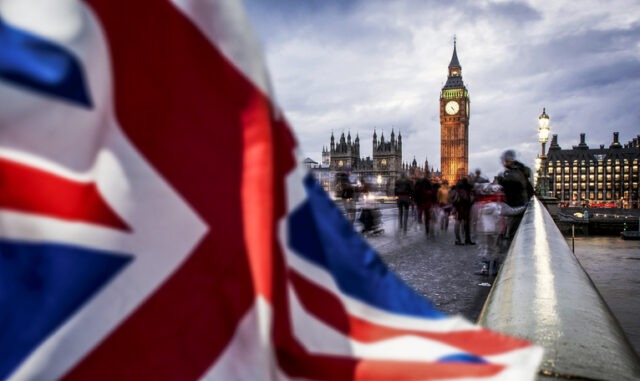In the UK, how long someone lives often comes down to where they’re born and how much money they have.

It isn’t just genetics or luck—it’s the result of investment, opportunities, and community health support. In richer areas, people tend to live longer, healthier lives; in poorer regions, life expectancy drops—and not by a little. This isn’t particularly surprising, but it is heartbreaking, especially since it’s totally avoidable. Here’s how income inequality shapes lifespan in clear, connected ways.
There’s a clear gap between the richest and poorest areas.

People in the most deprived parts of England can expect to live nearly a decade less than those in the wealthiest regions. For men, life expectancy is around 73 years in the poorest communities, compared to over 83 in the wealthiest. The difference for women is slightly smaller but still striking.
And it’s not just about how long people live—it’s how they live. Those in more deprived areas spend up to 20 years in poor health, while those in wealthier areas often enjoy more years free of illness and disability. That’s a huge quality-of-life gap, driven largely by economic inequality.
Geography matters when it comes to north vs south.

Life expectancy follows a geographical pattern, with southern England faring better than the north. Places like London, Surrey, and Oxfordshire regularly report higher life expectancies, while the North East, parts of Yorkshire, and coastal towns struggle with lower averages.
Even within the same city, this divide can be shocking. In some areas, you can travel just a few miles and see a ten-year difference in average lifespan. That kind of contrast tells you everything about how unevenly opportunity and support are spread.
Austerity’s lingering effects can be felt everywhere.

Since the early 2010s, public health improvements have stalled. In some deprived areas, life expectancy has even gone into reverse, especially for women. Austerity measures cut back funding for local councils, healthcare outreach, and social services, and it’s still taking a toll.
As public spending dropped, support for vulnerable communities weakened. That meant fewer early interventions, worse housing, and rising mental health struggles. When support systems vanish, people’s health starts to break down much earlier in life.
“Deaths of despair” and lost potential are real problems.

Places hit the hardest by poverty and unemployment often report higher rates of suicide, drug use, and alcohol-related deaths. These so-called “deaths of despair” have become alarmingly common in towns like Blackpool and other former industrial areas.
Behind those numbers are stories of people who felt hopeless, unsupported, and stuck. Chronic stress, isolation, and lack of opportunity don’t just wear people down emotionally—they lead to real, measurable physical health consequences too.
There are major gaps in access to healthcare.

The NHS is meant to be universal, but the way services are distributed still favours wealthier areas. People in deprived communities are more likely to delay seeing a doctor, have fewer local options, and suffer from late diagnoses of serious conditions.
Even something as simple as getting to an appointment can be a hurdle. Limited public transport, poor awareness, and language barriers all contribute to people falling through the cracks. Over time, those missed opportunities add up to shorter lives.
Inequality itself makes everyone less healthy.

It’s not just that poor people have it worse—it’s that big gaps in income drag down the average for everyone. Research shows that societies with greater income inequality tend to have lower overall life expectancy, even for those in the middle or top. When inequality rises, trust in society falls. People become more stressed, less connected, and more likely to adopt unhealthy coping behaviours. It affects mental and physical health across the board—not just at the very bottom.
Education, environment, and health are all linked.

Regions with better schools, clean air, green spaces, and stable housing almost always see better health outcomes. In contrast, people living in areas with poor education systems and high pollution face more barriers to good health from a young age. When kids grow up with limited access to healthy food, poor housing, and few role models, those disadvantages don’t just disappear in adulthood. They snowball, and health is one of the clearest places that shows.
The healthy years gap is even wider.

The difference in how long people live is bad enough, but the gap in “healthy life expectancy” is even worse. In wealthier areas, people can expect to live well into their seventies before serious health issues kick in. In poorer areas, that point often arrives in the fifties.
That means more time spent in pain, with chronic illness, or feeling stuck. It’s not just about living longer—it’s about the years where you’re able to enjoy life, stay active, and remain independent. And for many, those years are disappearing far too soon.
Men in poor areas are hit especially hard.

Across the UK, men generally have shorter life expectancies than women, but the gap is even starker in deprived areas. Men in the poorest parts of the country can expect to live nearly a decade less than those in more affluent areas. These men are also more likely to suffer from heart disease, stroke, addiction, and untreated mental health issues. Many are dealing with generational poverty, unstable work, and cultural stigmas around seeking help. It all adds up, fast.
A lot needs to change.

Closing the life expectancy gap means more than just fixing the NHS. It means investing in housing, education, job opportunities, and mental health services—especially in areas that have been underfunded for years. The solution isn’t medical; it’s social. Policymakers need to treat health inequality as a national emergency, not a side issue. If we want to improve life expectancy in the UK, we have to start by making life more liveable for everyone, not just those at the top.




